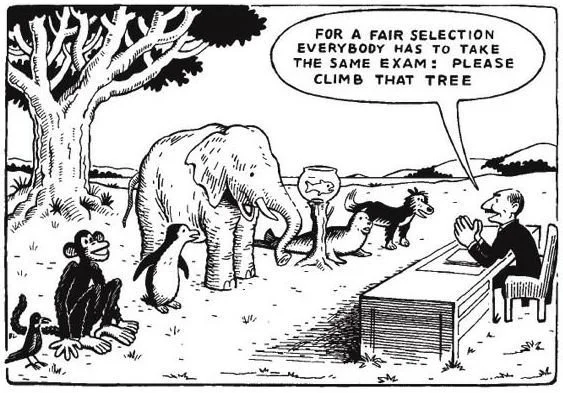A Case Study in Strengths. What If You’re Already Good and That’s the Point
In the 1950s, a group of Nebraska researchers set out to study rapid reading in schools. Around 6,000 tenth graders were involved, testing three different learning techniques: tachistoscope, film, and good old fashioned effort.
No method came out on top. But something unexpected did.
When the researchers dug into the data, they noticed something odd. The students who were already reading the fastest at the start, around 300 words per minute, made the biggest gains. Some reached speeds of 2,900 words per minute. That’s an 800 percent increase.
Slower readers improved too, but only by a small margin.
It made them wonder. What if the greatest gains in human development come from investing in what people do best naturally, not fixing what they struggle with?
Sound Familiar?
Think back to school. We were all taught the same core subjects: maths, science, English, maybe PE. You probably had one or two you flew through and others you slogged through. In case you were wondering, PE was definitely not my subject. Which can be tricky in a country that’s sports mad.
The system was built for sameness, not strengths. We called some kids “bright” and others “behind” without really asking Bright at what? Behind in what?
Same Test. Wrong Measure.
You’ve probably seen the cartoon. A monkey, penguin, elephant, and fish all being asked to climb a tree to prove their ability. It’s often attributed to Einstein. “Everybody is a genius. But if you judge a fish by its ability to climb a tree, it will live its whole life believing it is stupid.” Whether he said it or not, the message rings true. When we test everyone the same way, we miss what makes them exceptional.
The Shift in Thinking
Here’s how a conventional view of development compares to a strengths-based one:
A conventional view says most behaviours can be learned. A strengths-based view says only some behaviours can be learned
A conventional view says the best performers all do the same things. A strengths-based view says the best performers get to the same outcome in different ways
A conventional view says fixing weaknesses leads to success. A strengths-based view says fixing weaknesses prevents failure. It’s building on strengths that creates success
So What?
This isn’t just about reading speeds or cartoon fish. It’s about what happens when we stop trying to make everyone the same and start building on what makes them different.
Whether you’re a team leader, coach, or just trying to grow yourself, here’s the prompt. What’s already working that deserves more of your energy? The next big leap isn’t in your gap. It’s in your edge.
Source: Clifton D.O., & Harter J.K. (2003). Investing in Strengths In A.K.S. Cameron, B.J.E. Dutton & C.R.E. Quinn (Eds.), Positive Organizational Scholarship (pp. 111-‐121). San Francisco: Berrett-‐ Koehler Publishers, Inc.



